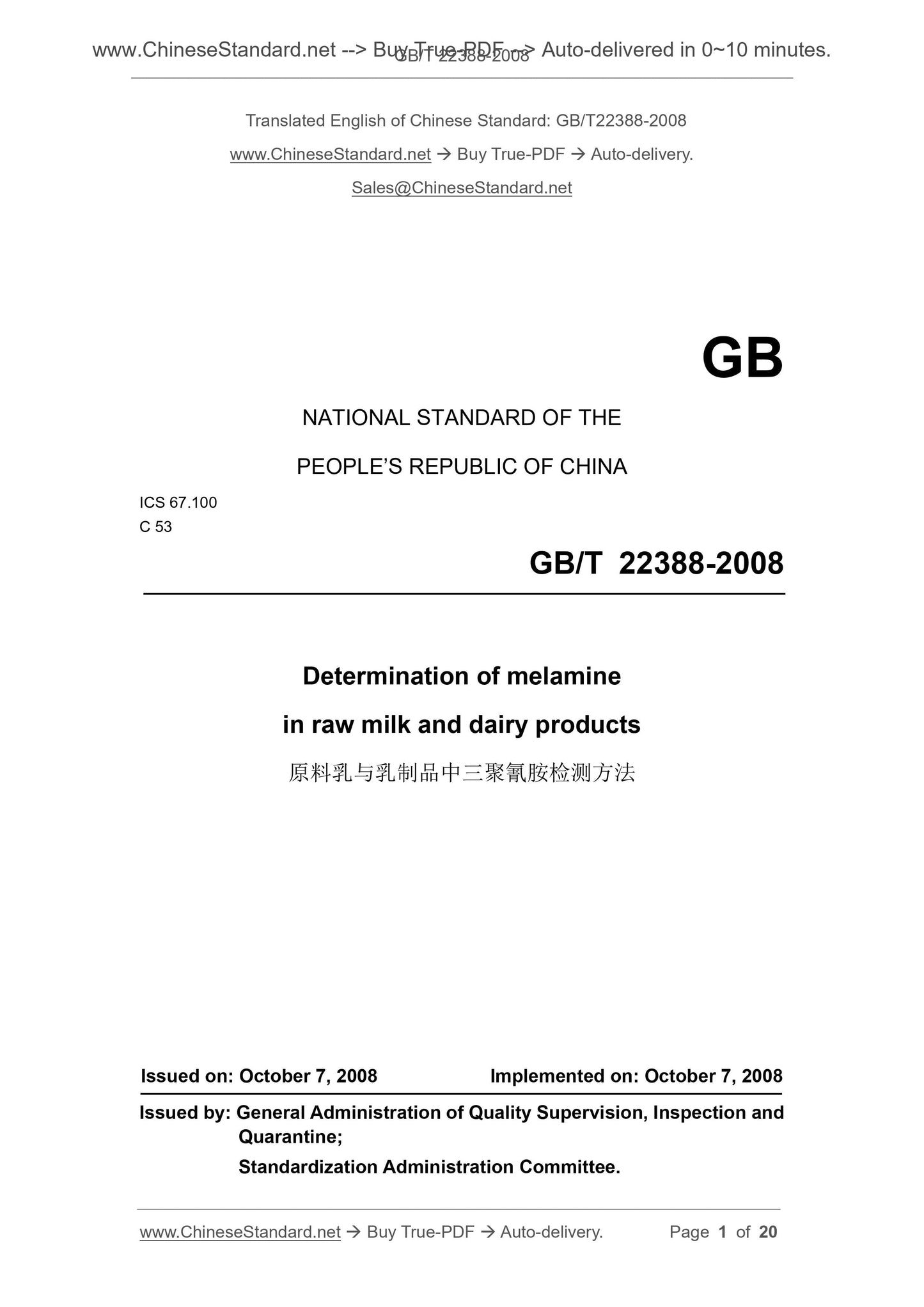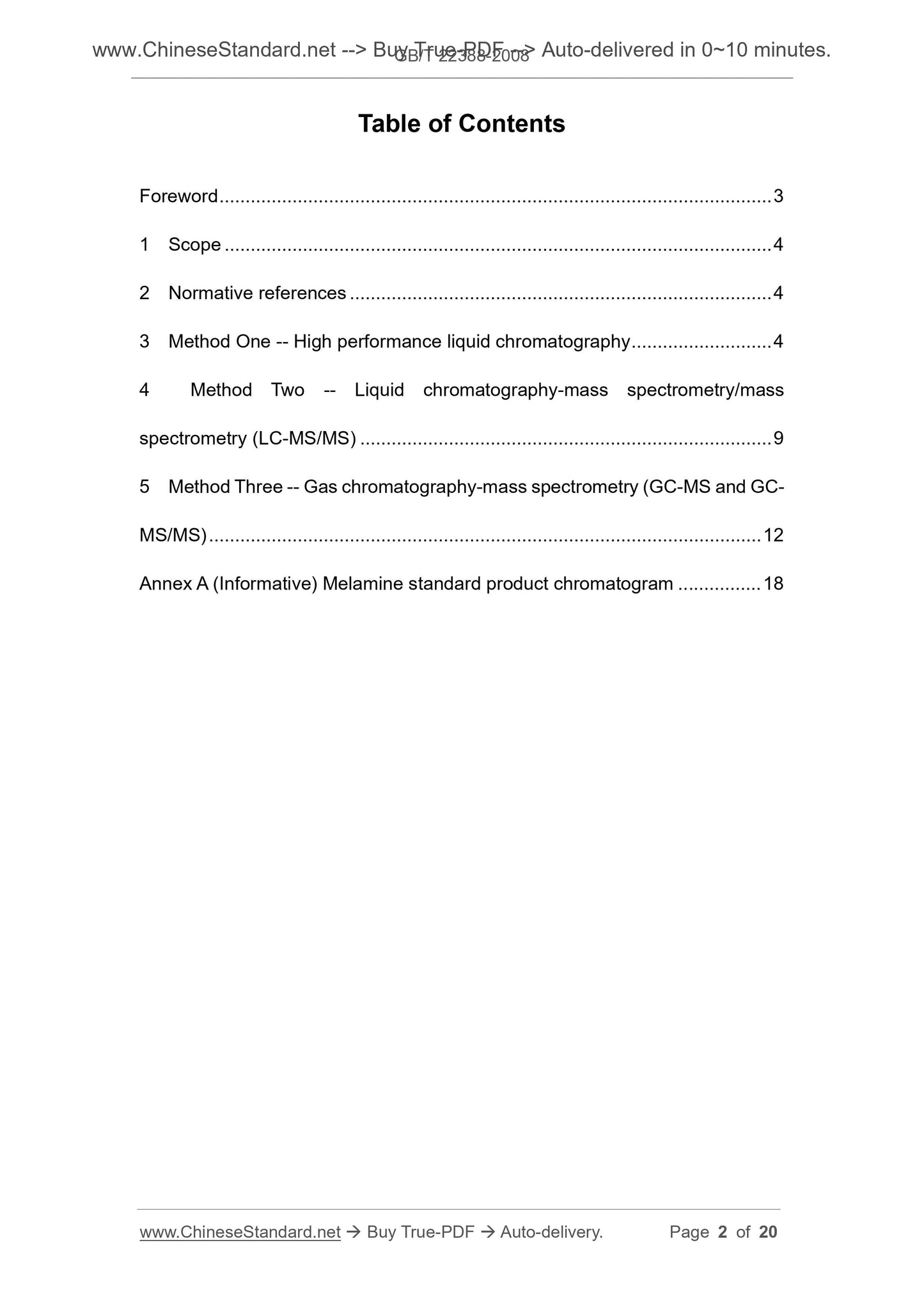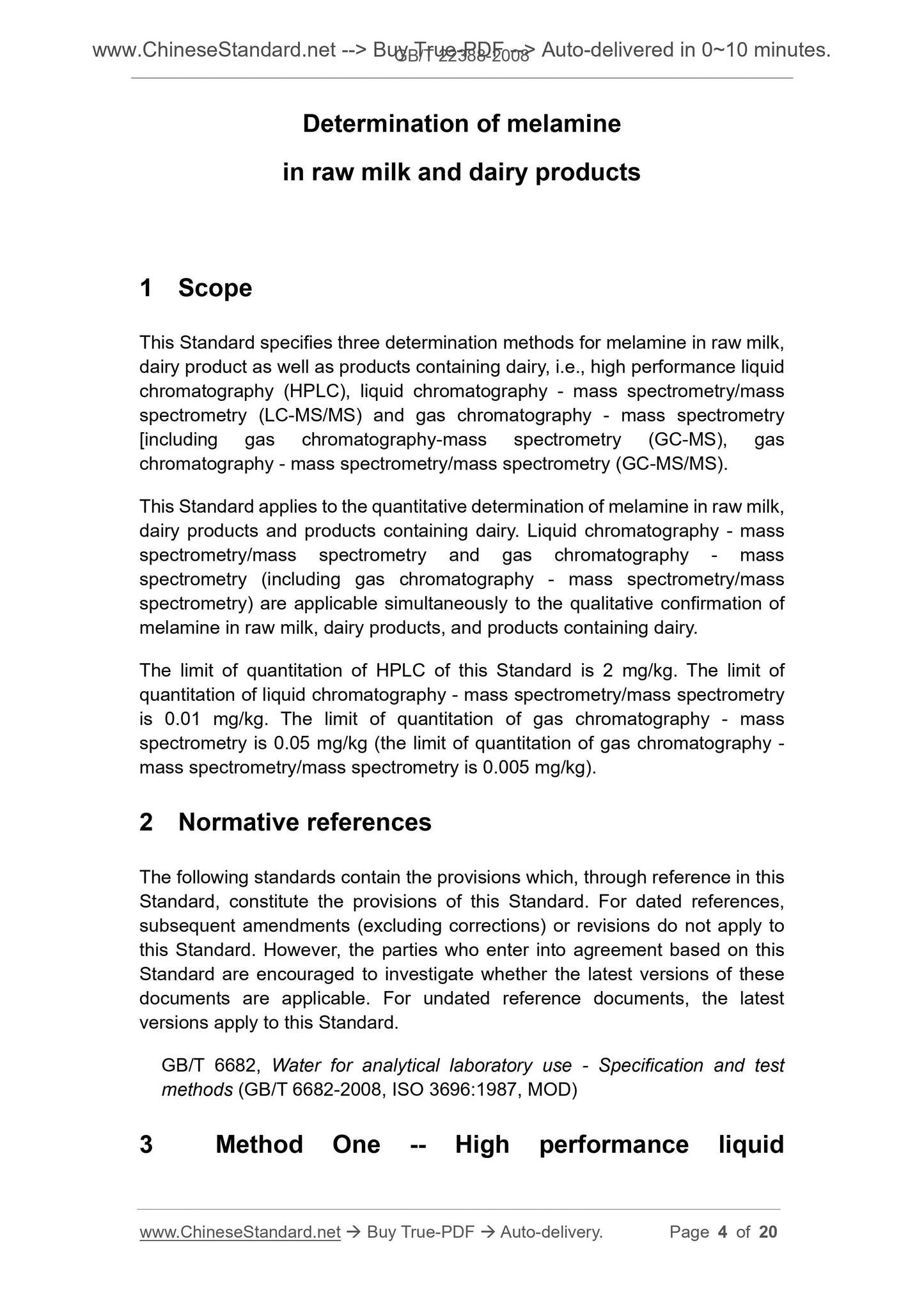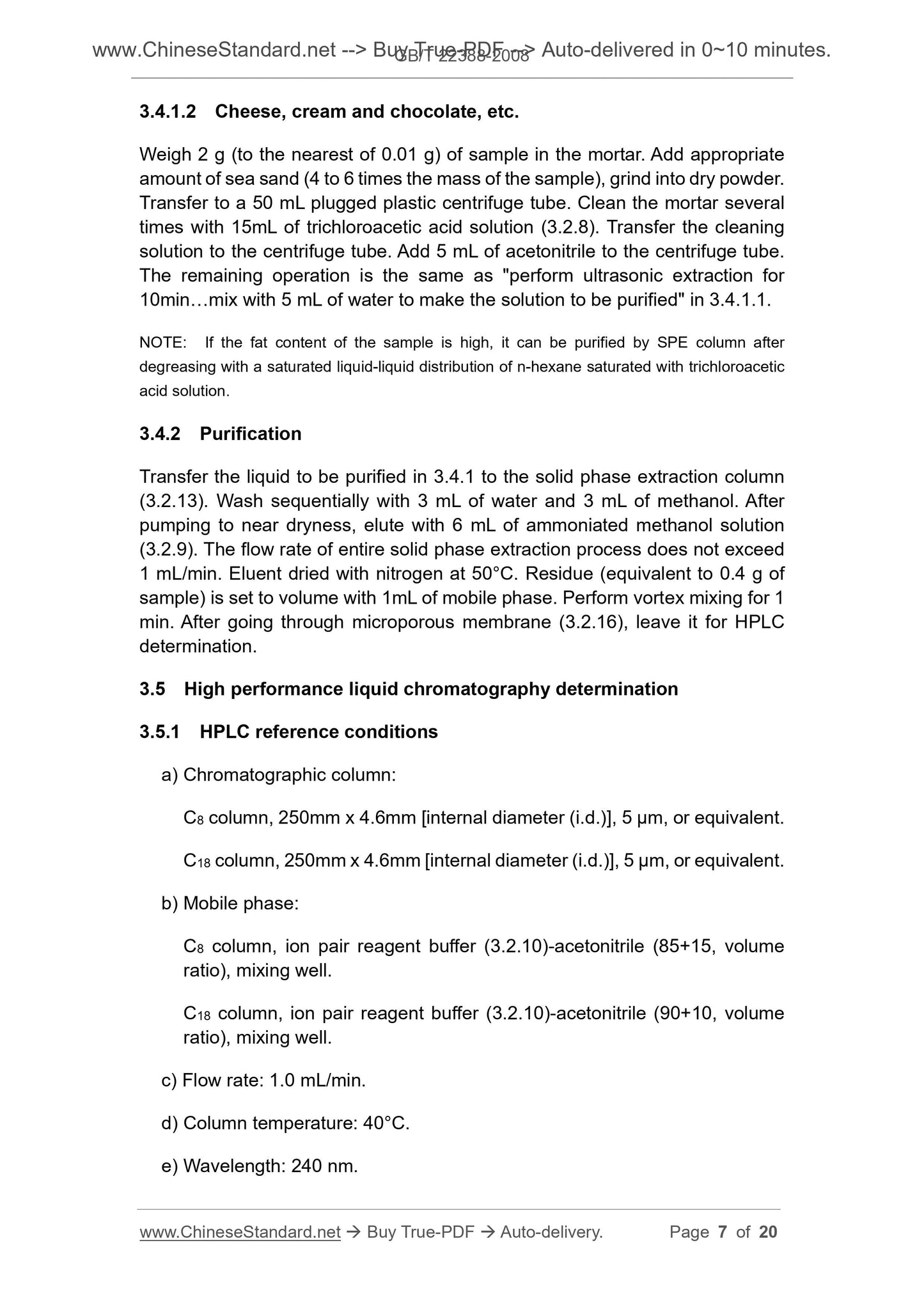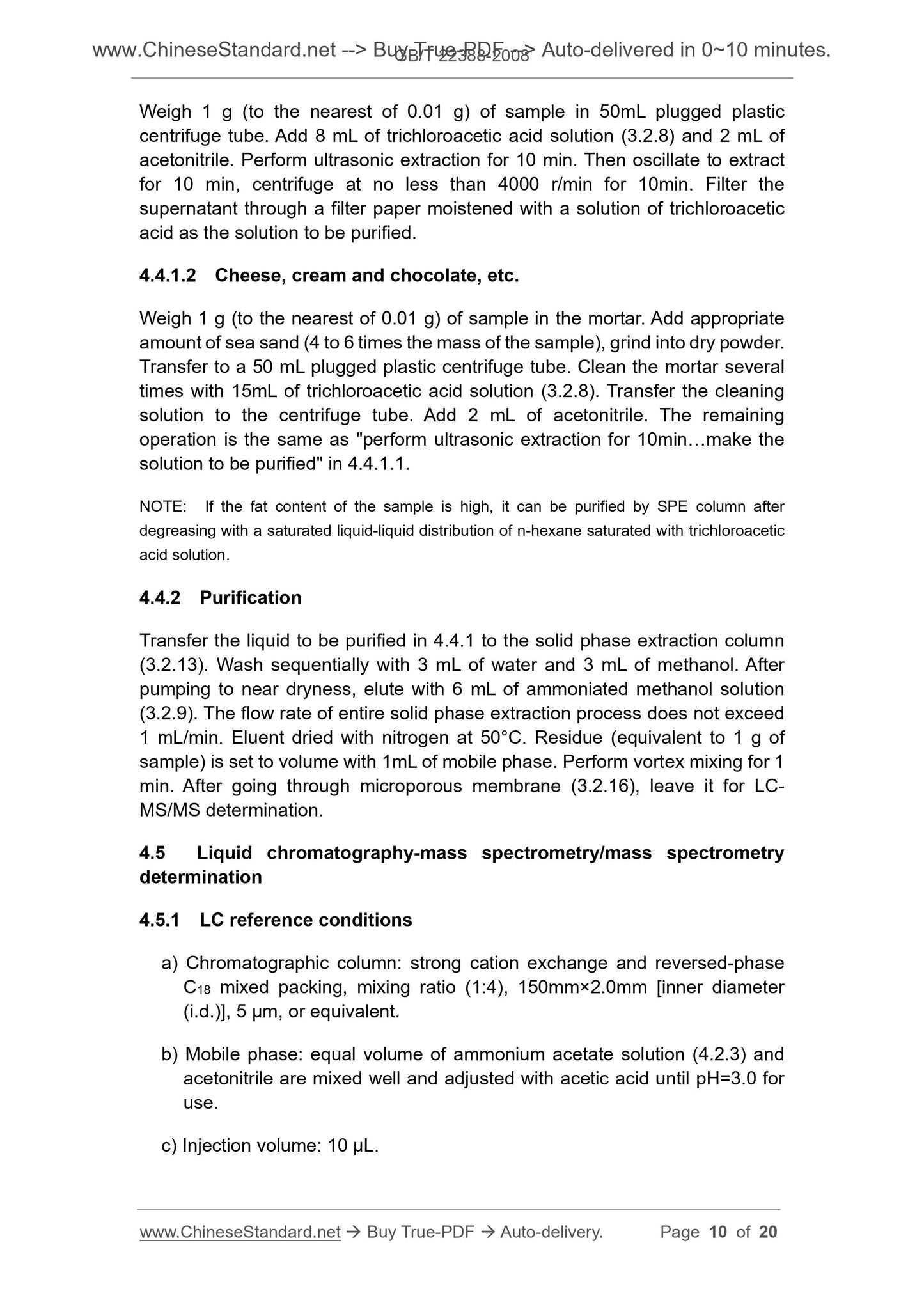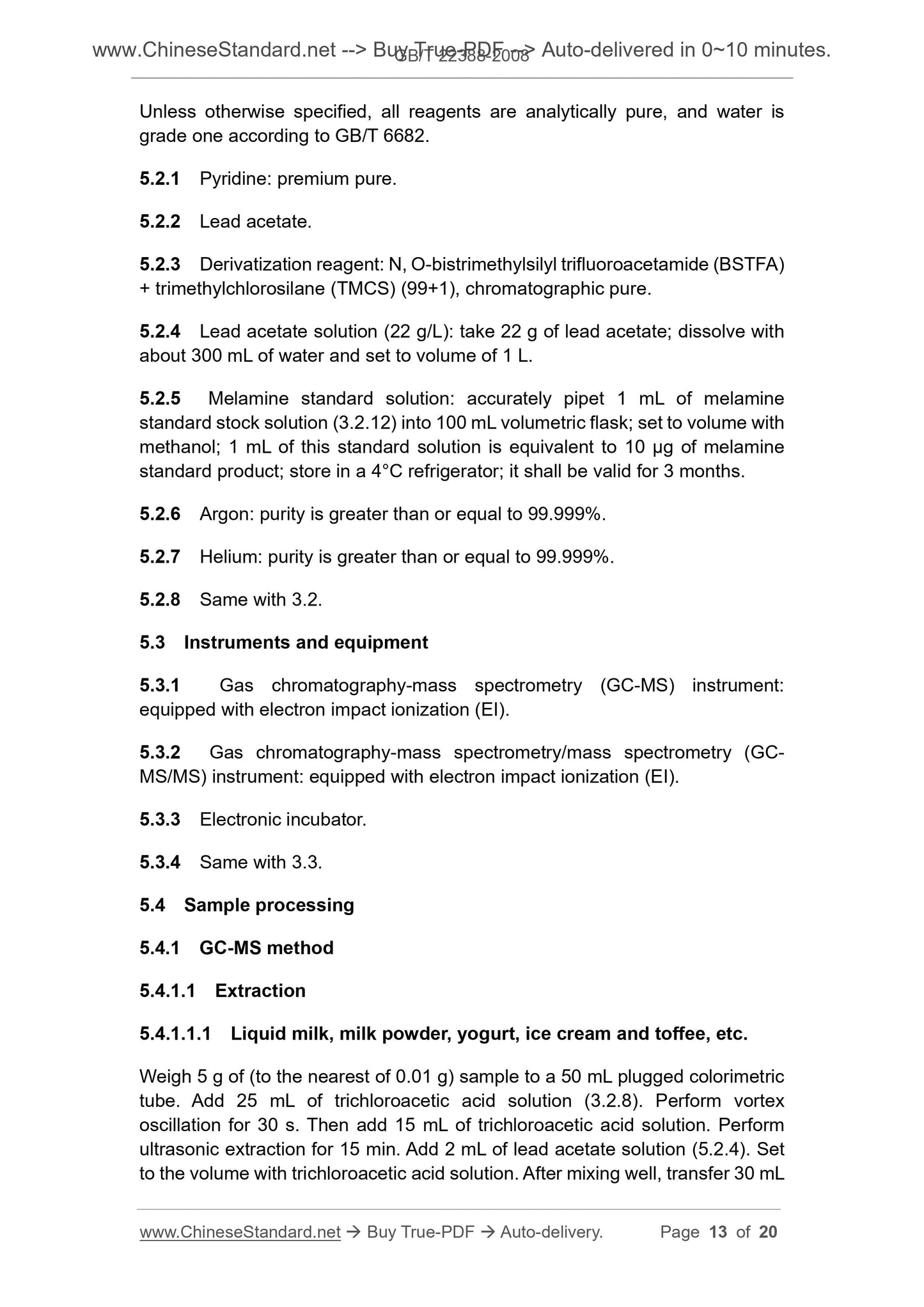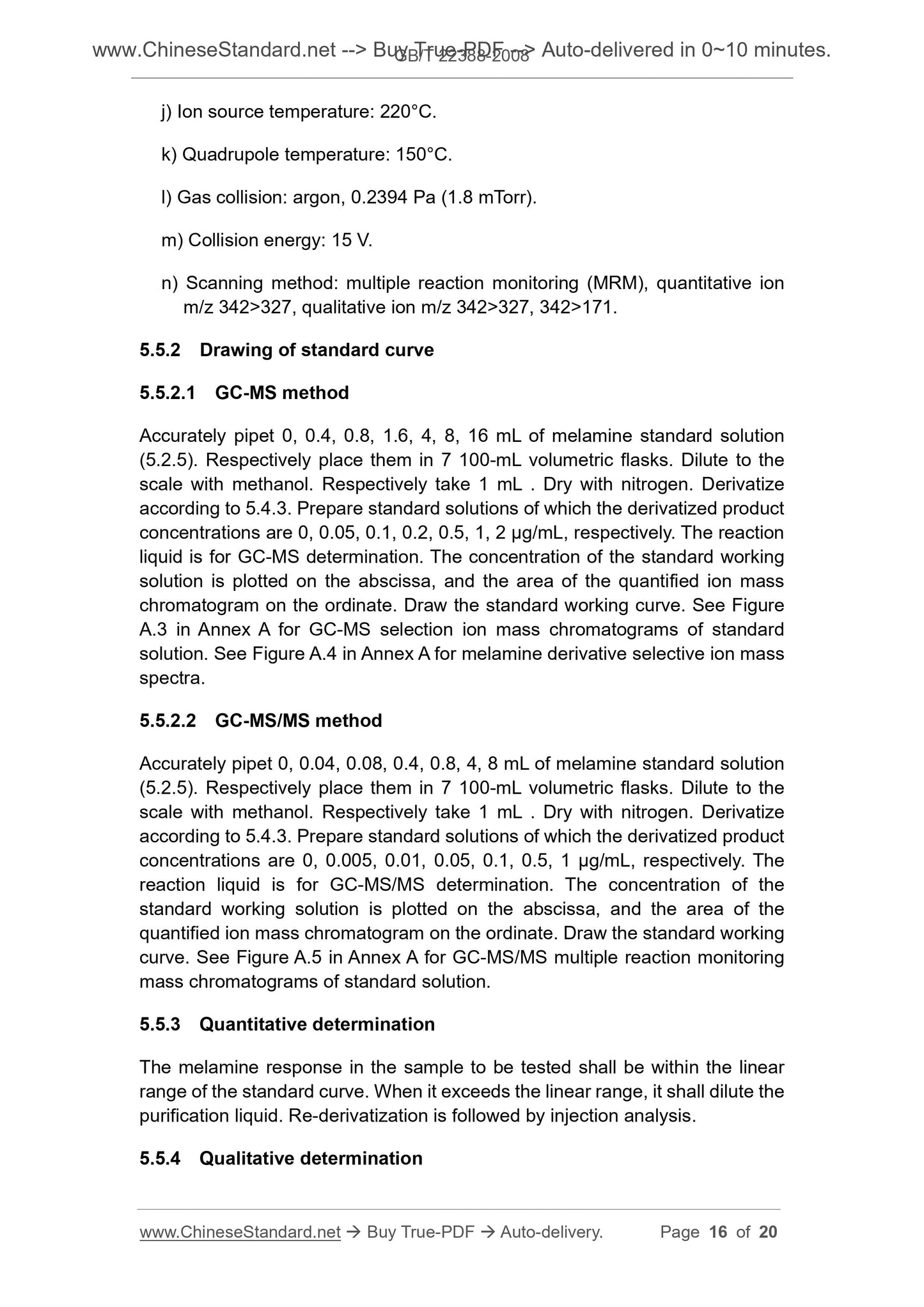1
/
of
7
www.ChineseStandard.us -- Field Test Asia Pte. Ltd.
GB/T 22388-2008 English PDF (GB/T22388-2008)
GB/T 22388-2008 English PDF (GB/T22388-2008)
Regular price
$85.00
Regular price
Sale price
$85.00
Unit price
/
per
Shipping calculated at checkout.
Couldn't load pickup availability
GB/T 22388-2008: Determination of melamine in raw milk and dairy products
Delivery: 9 seconds. Download (and Email) true-PDF + Invoice.Get Quotation: Click GB/T 22388-2008 (Self-service in 1-minute)
Newer / historical versions: GB/T 22388-2008
Preview True-PDF
Scope
This Standard specifies three determination methods for melamine in raw milk,dairy product as well as products containing dairy, i.e., high performance liquid
chromatography (HPLC), liquid chromatography - mass spectrometry/mass
spectrometry (LC-MS/MS) and gas chromatography - mass spectrometry
[including gas chromatography-mass spectrometry (GC-MS), gas
chromatography - mass spectrometry/mass spectrometry (GC-MS/MS).
This Standard applies to the quantitative determination of melamine in raw milk,
dairy products and products containing dairy. Liquid chromatography - mass
spectrometry/mass spectrometry and gas chromatography - mass
spectrometry (including gas chromatography - mass spectrometry/mass
spectrometry) are applicable simultaneously to the qualitative confirmation of
melamine in raw milk, dairy products, and products containing dairy.
The limit of quantitation of HPLC of this Standard is 2 mg/kg. The limit of
quantitation of liquid chromatography - mass spectrometry/mass spectrometry
is 0.01 mg/kg. The limit of quantitation of gas chromatography - mass
spectrometry is 0.05 mg/kg (the limit of quantitation of gas chromatography -
mass spectrometry/mass spectrometry is 0.005 mg/kg).
Basic Data
| Standard ID | GB/T 22388-2008 (GB/T22388-2008) |
| Description (Translated English) | Determination of melamine in raw milk and dairy products |
| Sector / Industry | National Standard (Recommended) |
| Classification of Chinese Standard | C53 |
| Classification of International Standard | 67.100 |
| Word Count Estimation | 14,178 |
| Date of Issue | 2008-10-07 |
| Date of Implementation | 2008-10-07 |
| Quoted Standard | GB/T 6682 |
| Issuing agency(ies) | General Administration of Quality Supervision, Inspection and Quarantine of the People's Republic of China, Standardization Administration of the People's Republic of China |
| Summary | This standard specifies the raw milk, dairy products and three measurement methods for containing melamine in dairy products. That performance liquid chromatography, liquid chromatography-mass spectrometry/mass spectrometry and gas chromatography-mass spectrometry. This standard applies to raw milk, dairy products and dairy products containing melamine quantitative determination, liquid chromatography-mass spectrometry/mass spectrometry, gas chromatography-mass spectrometry applied to both raw milk, dairy products and dairy products containing melamine qualitative confirmed. This standard HPLC quantitation limit of 2 mg/kg, liquid chromatography-mass spectrometry/mass spectrometry quantification limit of 0. 01 mg/kg, gas chromatography-mass spectrometry quantification limit of 0. 05 mg/kg. |
Share
